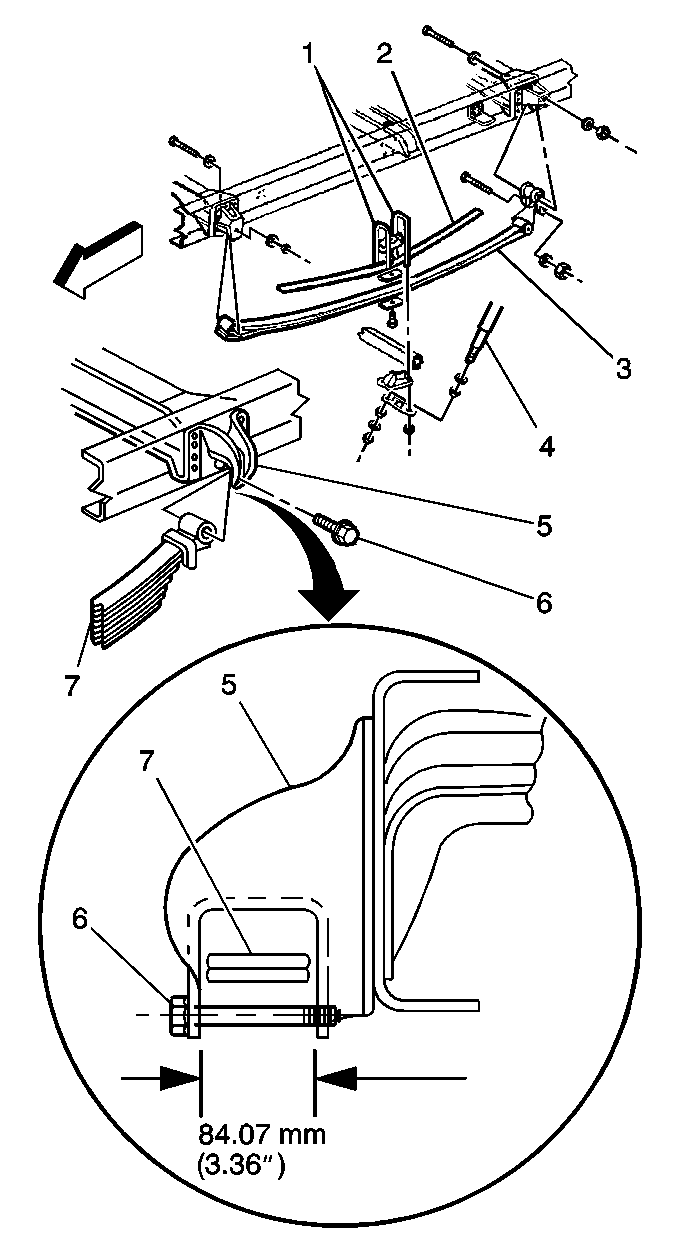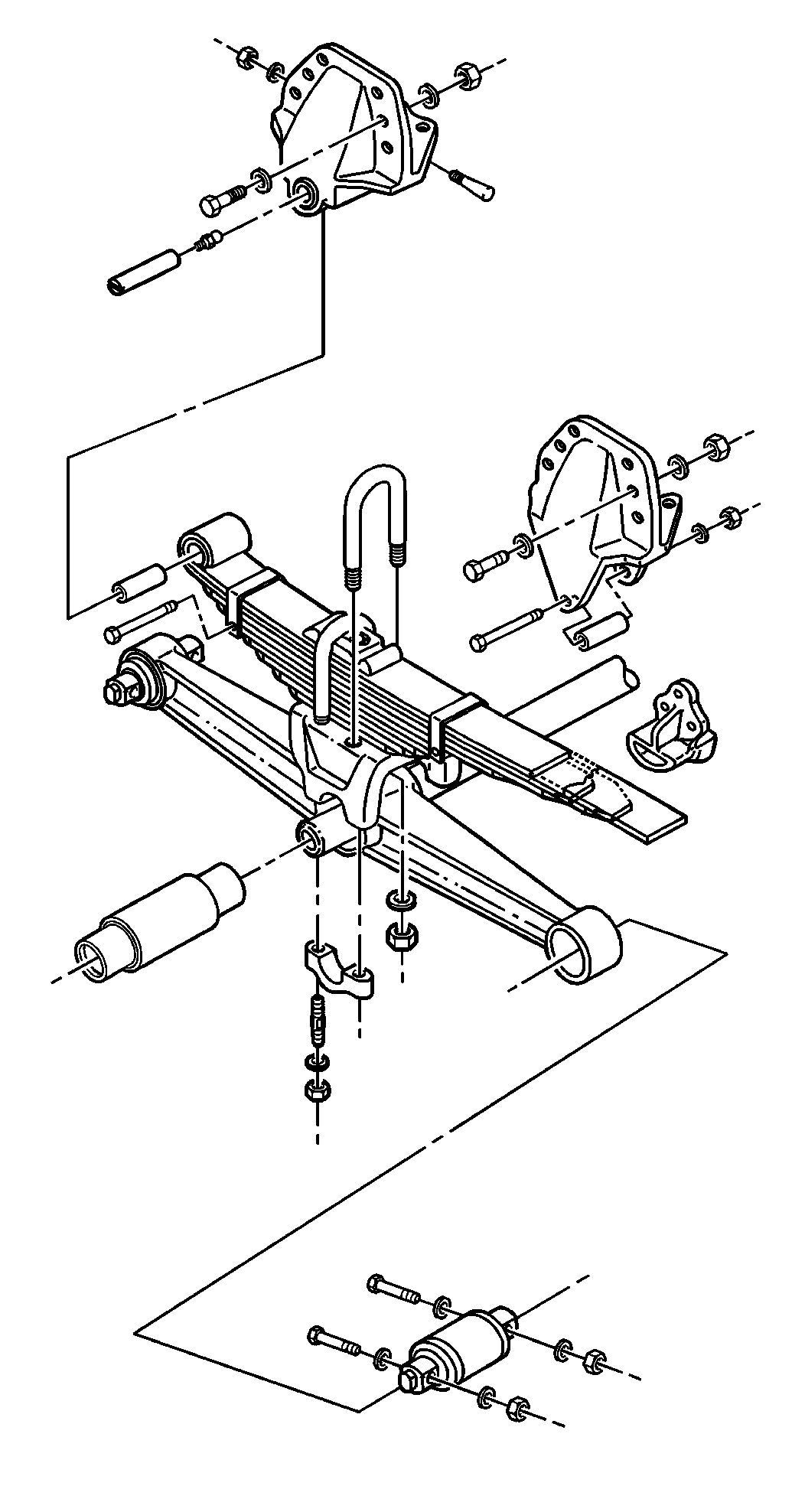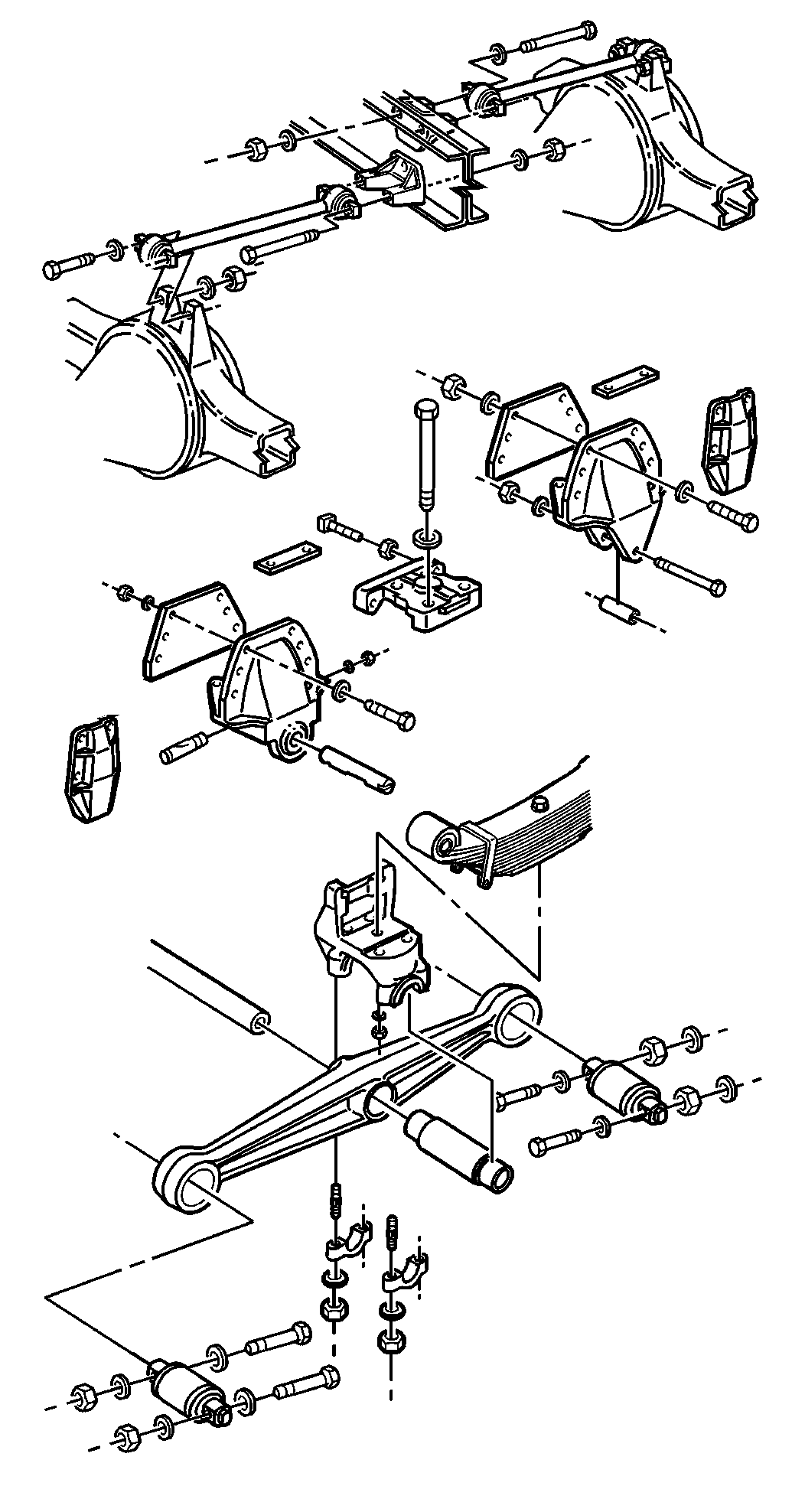
Tapered leaf springs have 2 leaves of parabolic taper form. Tapered leaf springs use a front eye and rear compression shackle.
Multileaf springs use a front eye and rear slider. The slider stop bolt must be tightened to specifications (1). All springs are a 2-stage design. All spring and shackle eyes are rubber bushed and non-lubricated.
Spring eyes are fully reamed in order to accept the rubber bushings. The auxiliary spring is a single leaf parabolic taper form and the frame brackets are shaped cams to produce a variable rate.
A polyurethane spring aid and rubber bump stop are attached to the frame above the spring center.
Dampening is provided by twin-tube shock absorbers mounted vertically behind the axle. Top and bottom attachments are pin type with rubber insulators. The upper end is attached to a frame crossmember. The lower end is attached to a bracket that mounts between the spring and the axle housing.
Shocks are required with the tapered leaf springs. Shocks are optional with the multileaf springs.
The stabilizer shaft assembly consists of a shaft attached to the frame by 2 links. The ends are attached to the axle by castings mounted between the spring assembly and the axle housing.
U-340 Tandem Axle

RT-400 Tandem Axle

The 2 suspensions perform the following functions:
| • | Utilize equalizing beams that tie the front and the rear axles together. |
| • | Permit independent vertical movement of each axle as required by road surface. |
Road shocks are partially absorbed through the rubber bushings at the following locations:
| • | The equalizing beam center ends |
| • | The torque rod ends |
Non-adjustable torque rods and equalizer beams transmit driving and braking forces to the vehicle frame.
Springs carry the load and maintain a straight alignment of the frame to the axles. Torque rods are positioned in order to maintain the proper drive line alignment and stabilize driving and braking forces.
The tandem suspension uses a top pad with U-bolts in order to secure the spring assembly to the saddle.
